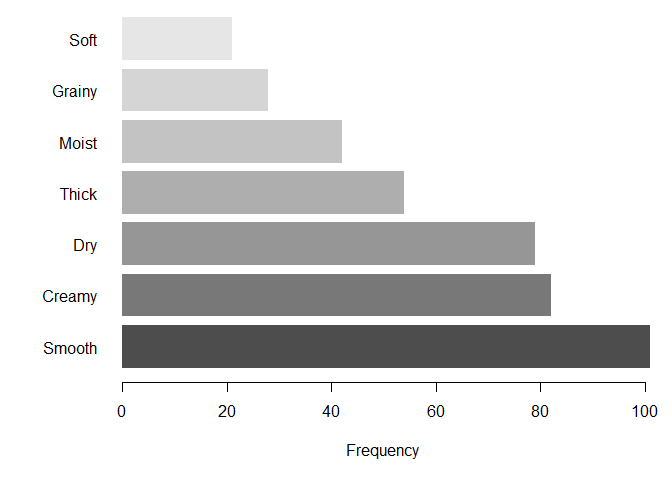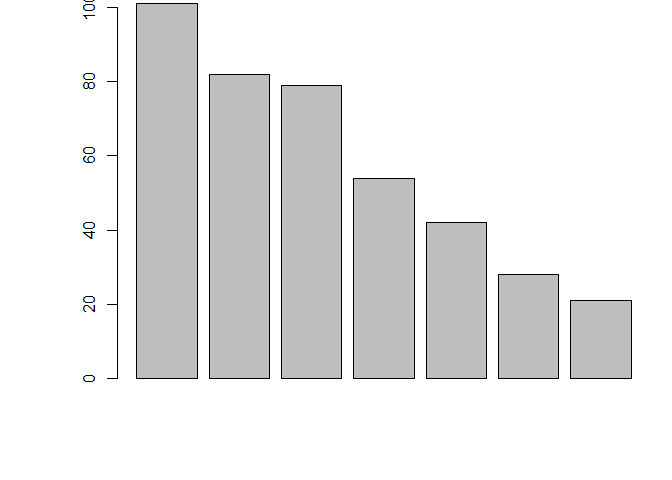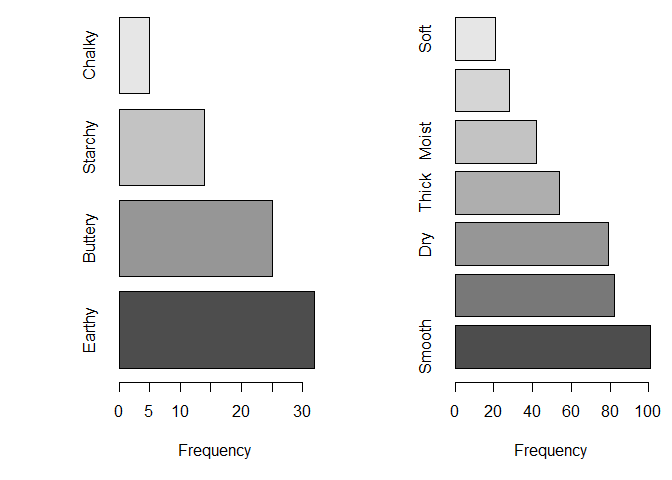Hello, I was wondering if someone know how I can combine 2 images into one image.
Here is code:
H <- c(32, 25, 14, 5)
par(mar=c(5,6,0.1,1)+.1)
barplot(H,
xlab = "Frequency",
ylab = "",
names.arg = c("Earthy", "Buttery", "Starchy", "Chalky"),
col = grey.colors(5),
horiz = TRUE, las=1, font.lab=1, font.axis=1, border = NA)

#Texture from First response
H <- c(101, 82, 79, 54, 42, 28, 21)
par(mar=c(5,6,0.1,1)+.1)
barplot(H,
xlab = "Frequency",
ylab = "",
names.arg = c("Smooth", "Creamy", "Dry", "Thick", "Moist", "Grainy", "Soft"),
col = grey.colors(7),
horiz = TRUE, las=1, font.lab=1, font.axis=1, border = NA)

Created on 2020-05-21 by the reprex package (v0.3.0)


